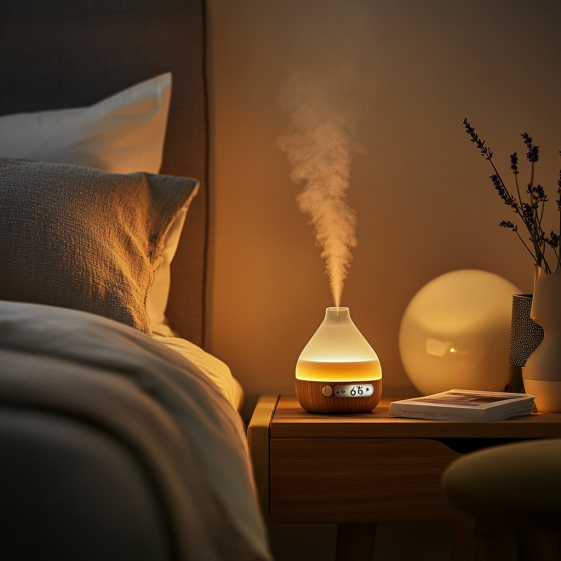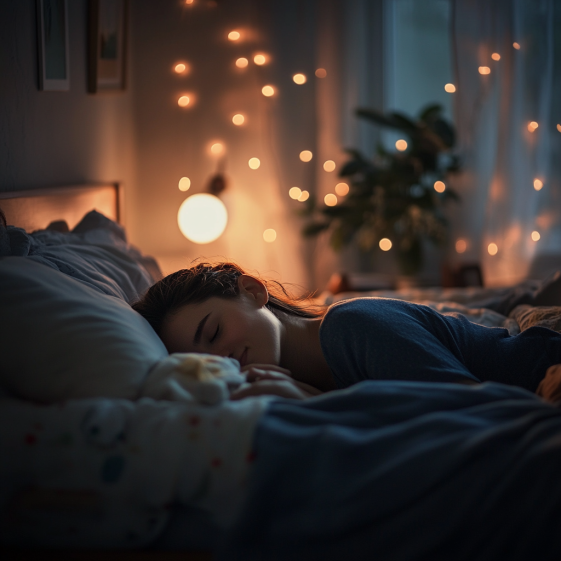Military Sleep Method: How to Fall Asleep Fast (No Boot Camp Required)
The Military Sleep Method is a two-minute relaxation and visualization routine that eases body tension and quiets racing thoughts so you can fall asleep faster—no apps or gadgets required. Follow the steps below, then pair them with simple sleep boosters for even better results.
Key Takeaways on the Military Sleep Method
- It targets body and mind: progressive relaxation + calm imagery to reduce tension and overthinking.
- It’s quick: with a little practice, the full routine takes about two minutes.
- Consistency wins: repeat nightly so your brain recognizes the wind-down cues.
- Pair with basics: cool room, white noise, and low light to boost the Military Sleep Method effect.
- Skip screens late: blue light delays melatonin and can slow you down.

Why the Military Sleep Method Matters for Your Sleep & Sanity
Bottom line: this method relaxes your nervous system fast by combining muscle release with peaceful mental imagery.
We all know sleep is important, but let’s be honest—it’s hard to drift off when your body’s tense and your mind’s racing. The Military Sleep Method works because it targets both problems at once: physical tension and mental overthinking.
It uses a blend of progressive muscle relaxation and visualization to trigger your body’s parasympathetic nervous system—aka the chill-out mode that helps you rest, digest, and recharge. In just a few steps, you can reset your system, quiet the noise, and ease into sleep naturally.
And the best part? It doesn’t require apps, gadgets, or supplements. Just your breath, your body, and a little practice.

How to Do the Military Sleep Method (Step-by-Step)
Start here: get comfortable, breathe slowly, and move through each step without rushing.
🛏️ Step 1: Relax Your Face
Unclench your jaw. Let your forehead, cheeks, and eyes soften. Imagine tension melting away like warm wax.
🛏️ Step 2: Drop Your Shoulders
Let them fall naturally. Think of them sinking into your mattress. No more holding stress in your neck and upper back.
🛏️ Step 3: Loosen Your Arms and Hands
Let your arms go heavy—like they’re made of sand. Relax all the way through your fingertips.
🛏️ Step 4: Breathe Deeply & Relax Your Chest
Inhale slowly. As you exhale, feel your chest soften. Let the breath carry out any lingering tension.
🛏️ Step 5: Relax Your Legs
Start from your thighs and work down to your calves, ankles, and feet. Picture them sinking into the bed, completely still.
🛏️ Step 6: Visualize Calm
Imagine you’re floating in a canoe on a quiet lake, or lying in a sunny meadow. Let your mind stay there.
🛏️ Step 7: Repeat a Gentle Mantra
If thoughts sneak in (they will), quietly repeat “Don’t think, don’t think” for about 10 seconds.
According to the University of Minnesota, this method works by combining structured relaxation with focused mental imagery—two proven techniques for faster sleep onset.

Common Mistakes to Avoid
Avoid these speed bumps: forcing sleep, skipping imagery, and shallow breathing slow your progress.
- Trying too hard: The goal isn’t to fall asleep immediately, but to relax deeply. Sleep follows naturally.
- Skipping visualization: This isn’t optional—it’s how you quiet racing thoughts.
- Shallow breathing: Make sure your breaths are deep and slow.
- Too much screen time: blue light delays melatonin production.
- Sleeping flat with reflux: Try Inclined Bed Therapy to reduce nighttime heartburn.
Sleep Boosters That Pair Well With This Method
Layer these gentle helpers to make the Military Sleep Method even more effective.
🌿 Try Aromatherapy
A diffuser with lavender or chamomile oil can signal calm to your brain. Scent is powerful—don’t underestimate it.
🌊 Add White Noise or Nature Sounds
Block out the barking dog or creaky pipes with steady, soothing background noise.
❄️ Keep Your Room Cool
Experts recommend 60–67°F for optimal sleep. A breathable comforter and cozy socks help balance warmth and chill.
📚 Read a Physical Book
Avoid screens. A low-light lamp and a good (but not too exciting) book can ease your brain into sleep mode.
For more breathing-based relaxation, try the 4-7-8 breathing technique for sleep, which pairs well with the Military Sleep Method for deeper relaxation.
If your partner tosses and turns all night, consider the Doppelbett Method, a cozy German tradition of sleeping with separate mattresses for better rest and fewer wakeups.
Myth Buster: “It Won’t Work for Me…”
Give it a few nights: this routine trains your body and brain—like building a muscle.
Think your brain’s too busy for something this simple? You’re not alone. But here’s the thing—this method trains your body and brain over time. The first night might feel awkward, but by night three or four, your body starts recognizing the cues and says, “Oh, we’re winding down now.”
Want more ideas to build a consistent bedtime routine? Check out these 10 simple sleep hacks that really work.
FAQ
- How long does the Military Sleep Method take?
- About two minutes once you learn the sequence. Go slowly at first; speed comes with practice.
- Do I need any tools or apps?
- No. It’s entirely analog—just your breath, your body, and calm imagery.
- What if I still can’t fall asleep?
- Focus on relaxing rather than “trying to sleep.” If you’re awake after ~20 minutes, get up briefly, read a few pages in dim light, then restart the steps.
- Can I use the Military Sleep Method for naps?
- Yes. Short sessions help you switch off quickly—set a gentle alarm so you don’t oversleep.
Related reading from Cozy Bed Quarters
- 4–7–8 Breathing Technique for Sleep
- Reduce Stress and Sleep Better
- Sleep Smarter: 21 Proven Ways to Improve Your Sleep Quality
Other reading we found popular
- Sleep Foundation — How Blue Light Affects Sleep
- Cleveland Clinic — How to Fall Asleep Fast
- Sleepstation — Relaxation Techniques for Sleep


